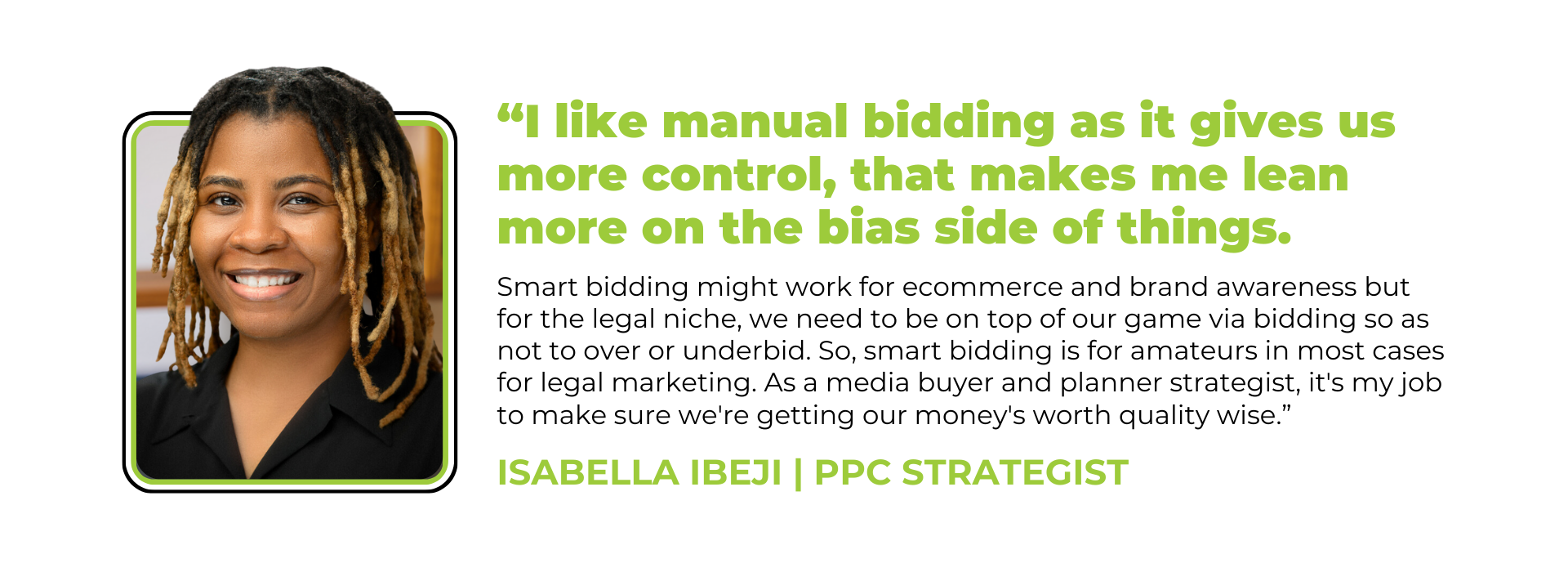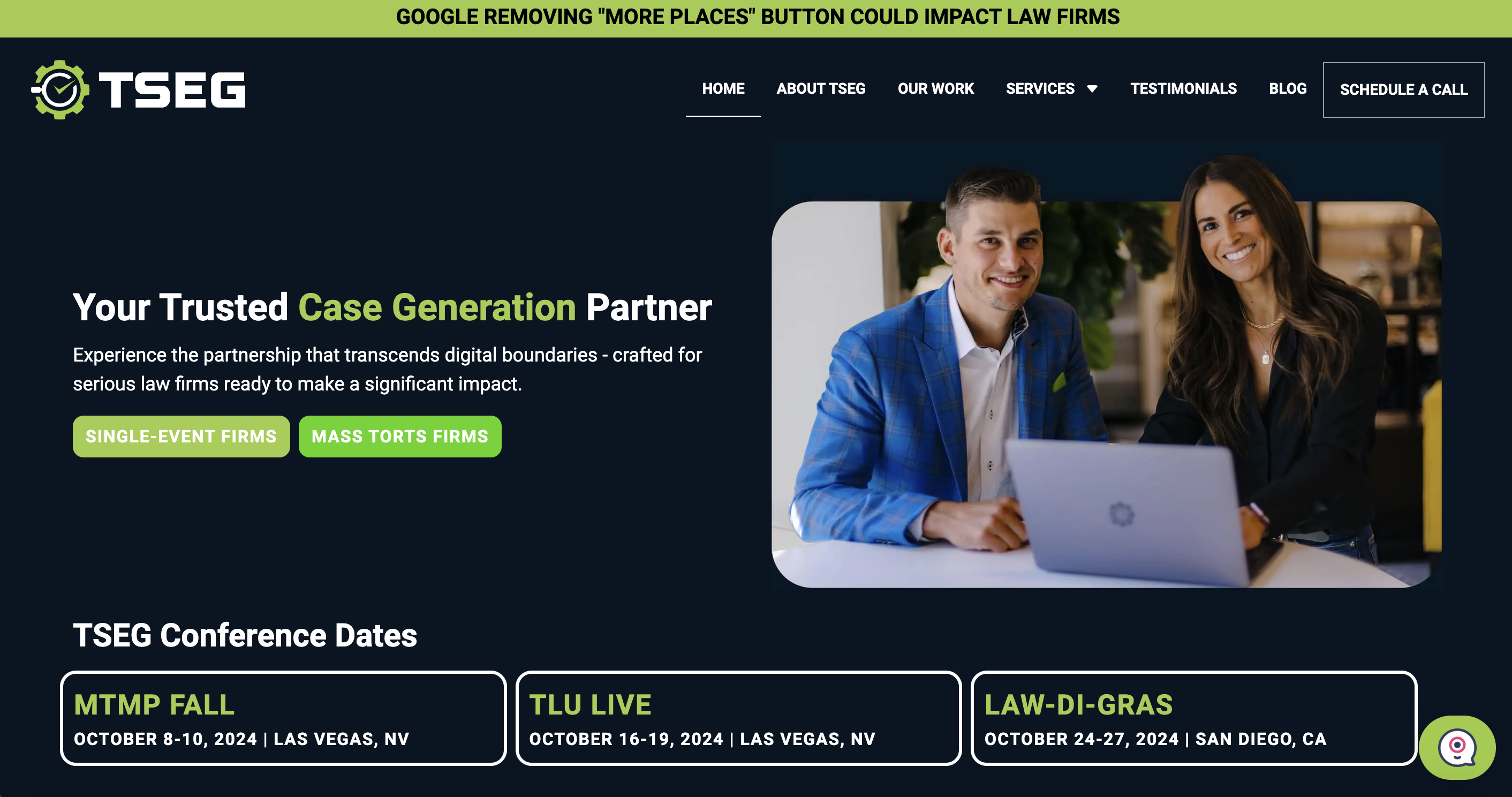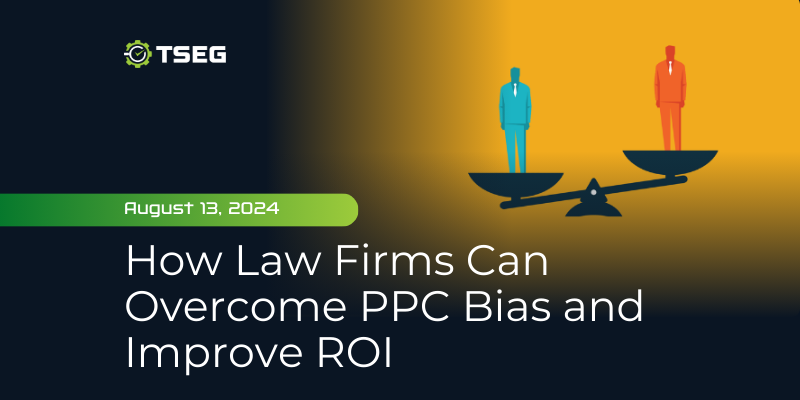How Law Firms Can Overcome PPC Bias and Improve ROI
Posted on Tuesday, August 13th, 2024 at 3:43 pm
What is PPC Bias?
Pay-per-click (PPC) advertising is an essential tool for law firms looking to attract new clients online. However, biases in PPC campaigns can hinder their effectiveness and reduce return on investment. PPC bias occurs when ad targeting is unintentionally skewed, often due to assumptions or limitations in data, which affects who sees the ads and how they interact with them.
For instance, a campaign might over-target certain demographics while neglecting others, or it might rely too heavily on outdated data that doesn’t reflect current market conditions. This can result in ads being shown to less relevant audiences, missing out on potential clients who would be highly interested in the firm’s services.
The Importance of Balancing AI with Human Expertise in Legal PPC Campaigns
While AI and machine learning have revolutionized PPC advertising, they aren’t always a perfect fit for every industry. For example, in the legal industry, Google’s AI might suggest using broad keyword match types to maximize reach. However, this approach can flood campaigns with low-quality leads, wasting budget on irrelevant clicks.
AI recommendations are valuable, but it’s crucial not to rely on them entirely. Human oversight is necessary to tailor strategies to specific niches, ensuring that campaigns stay focused on high-quality leads. Balancing AI with industry-specific expertise leads to more effective, efficient campaigns.
Manual Bidding
TSEG PPC Strategist, Isabella Ibeji, chimes in on her experience when it comes to manual bidding.

Bid Strategy Learning
A good example of manual bidding would be starting a campaign by letting Google do their Bid Strategy Learning. This helps us understand the true value of each conversion. If we find that the costs are higher than expected, we can implement a target cost-per-acquisition (CPA) to set a cap on what we’re willing to pay per conversion. This approach not only controls costs but also signals to Google our budget constraints. Conversely, when competition is high and the auction price rises, we can adjust the target CPA to indicate that we are prepared to outbid competitors for the right opportunities.
Keyword Ad Groups
Single Keyword Ad Group (SKAG) is a Google Ads strategy that uses separate ad groups for each keyword. We work in a very competitive niche, and by implementing SKAG, law firms may miss a lot of opportunities. TSEG recommends letting 7-10 keywords compete per ad group. Our clients’ competitors will bid on these keywords if we sleep on them, so if you snooze, you lose. We constantly check our keyword quality scores and click-through-rates because keywords that don’t have high impressions will be retired. We make sure our ad strength is minimum “GOOD” but we always strive for “EXCELLENT”. TSEG is aggressive with our auction processes, from keyword building to bid strategies, landing pages and copies. Each ad group should have a minimum of 2 ads, targeting different strategies, it can be testing copies, landers or a phone ad.
Conversion-Friendly Websites
We always advise clients on building conversion-friendly websites that are user-friendly and easy to navigate. Investing in a strong brand campaign is important because if users don’t recognize your full firm name, they might end up with your competitors instead. There’s also the risk of less reputable firms bidding on your keywords, capturing traffic that should be yours. We incorporate all of these factors when crafting webpages for our clients and ourselves.

Privacy-First PPC Strategies
As privacy concerns grow, the way PPC campaigns are managed is changing. Google’s move away from third-party cookies, among other changes, has pushed law firms to adopt privacy-first strategies that balance effective targeting with respect for user privacy.
In the past, third-party cookies were a staple for tracking user behavior across different websites, allowing for precise ad targeting. However, with increasing scrutiny over data privacy and stricter regulations, law firms need to find new methods to manage bias in their PPC campaigns while still achieving strong results.
Incorporating First-Party Data
With third-party data becoming less accessible, first-party data has become increasingly valuable for law firms. This data, collected directly from clients and prospects through interactions on the firm’s website, client intake forms, or other owned channels, is inherently more accurate and relevant.
Using first-party data in PPC campaigns allows law firms to create precise audience segments that match their ideal client profiles. For example, a firm specializing in personal injury cases can identify patterns in the types of cases they receive and use that information to target similar cases in future campaigns.
By focusing on current, direct interactions with clients, law firms can adjust their targeting to better reflect the needs and behaviors of their audience today. This not only improves the relevance of PPC ads but also helps avoid the pitfalls of outdated or inaccurate targeting.
Case Study
One of our clients experienced a significant increase in cost per lead (CPL) when we removed manual Target CPA (TCPA) controls and allowed Google to fully manage their campaign. The CPL skyrocketed from $16 to $100 almost immediately, demonstrating the risks of relying entirely on automated bidding strategies without oversight. Although we managed to optimize and reduce the CPL through careful adjustments, this situation highlighted the importance of maintaining control over critical aspects of PPC campaigns to avoid costly mistakes.
Partner with TSEG
TSEG is well-versed in the challenges law firms face when managing PPC campaigns, especially when it comes to addressing biases that can distort outcomes. By focusing on first-party data and privacy-first approaches, we ensure your campaigns are both effective and compliant with data privacy regulations. Partnering with TSEG means you’ll have the tools and insights needed to optimize your PPC efforts, maximizing your return on investment while minimizing bias.
